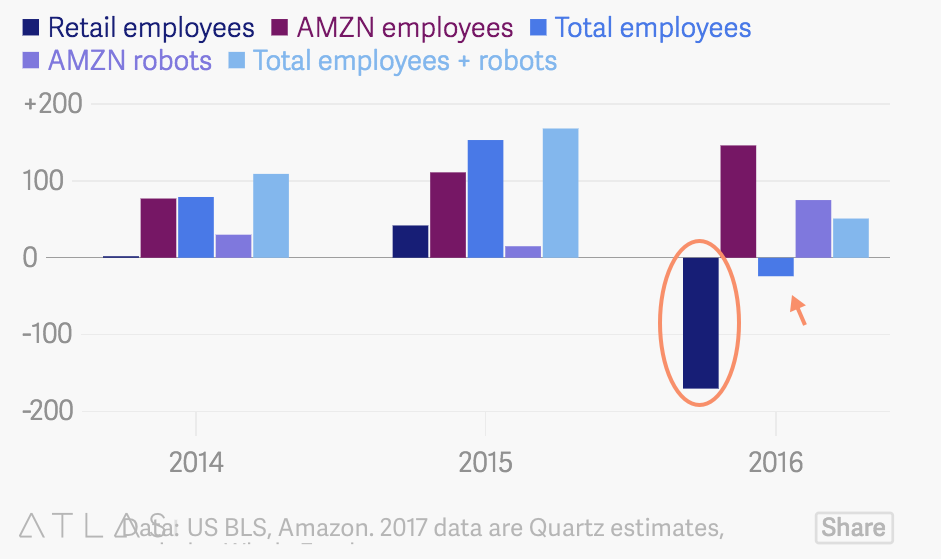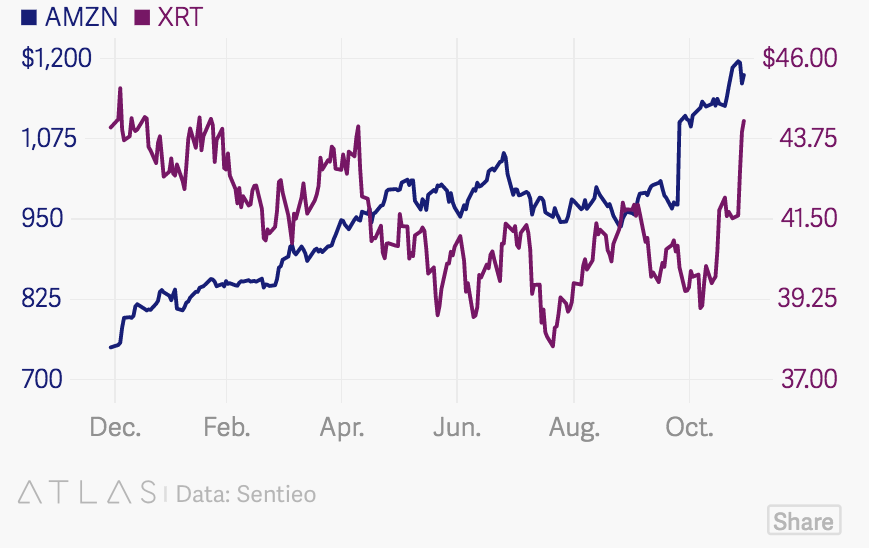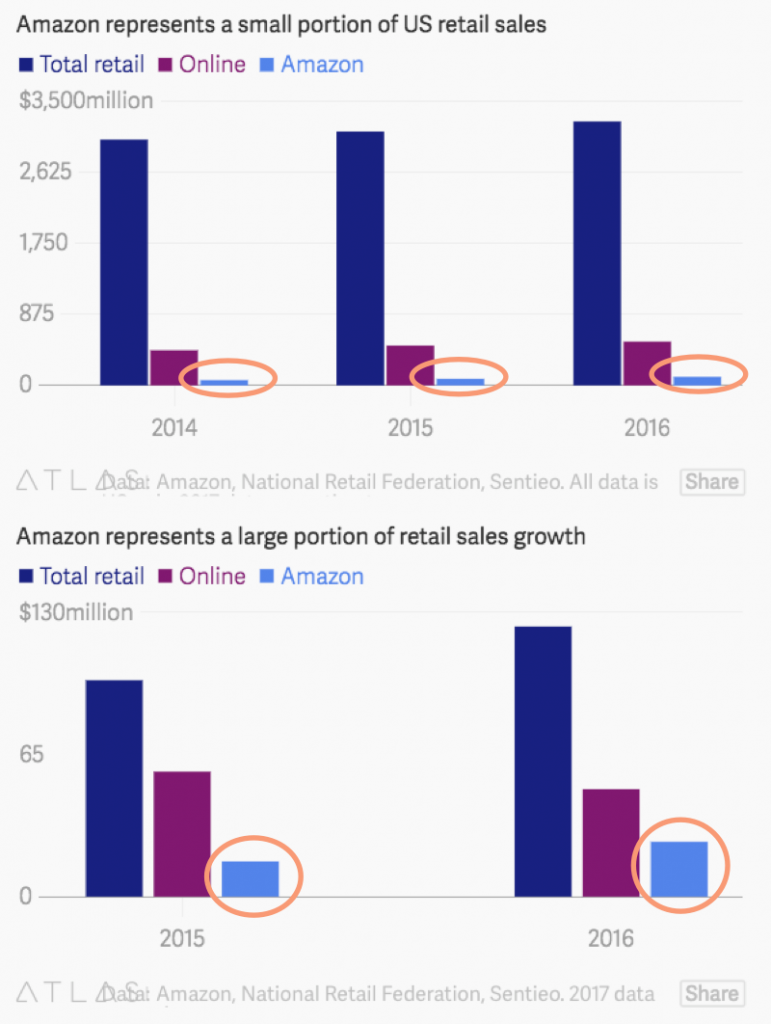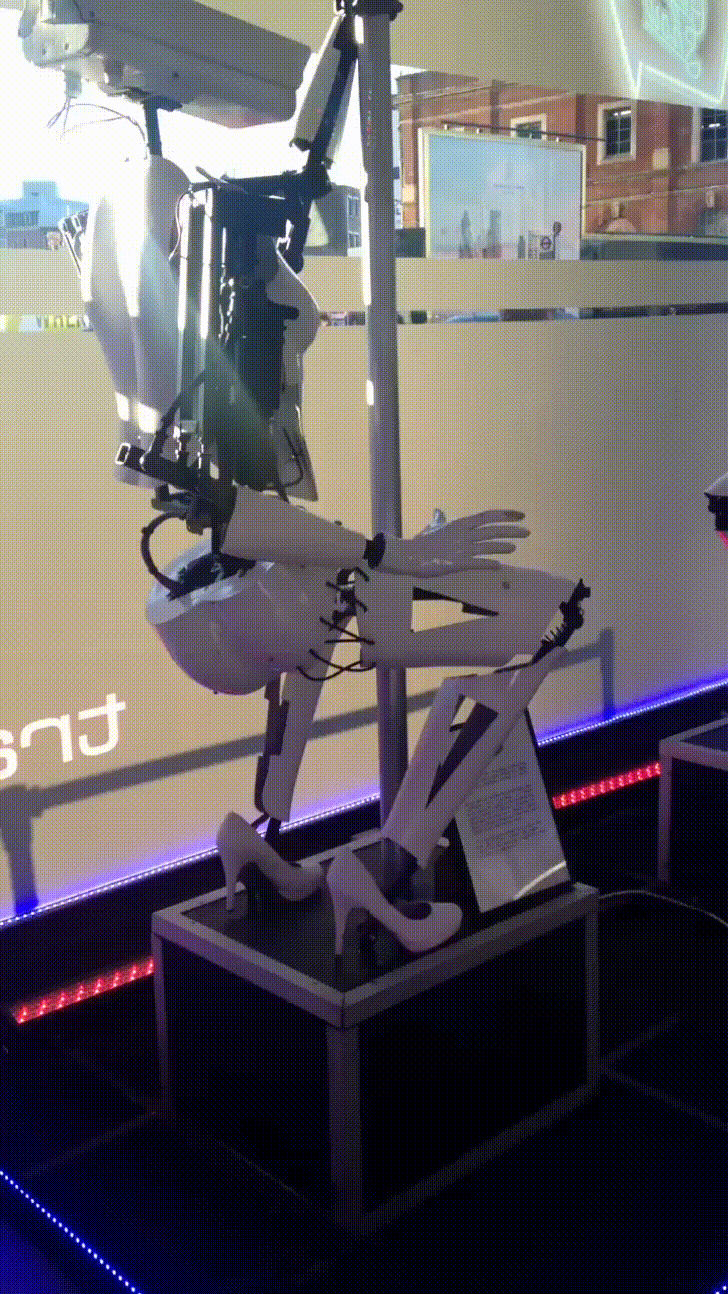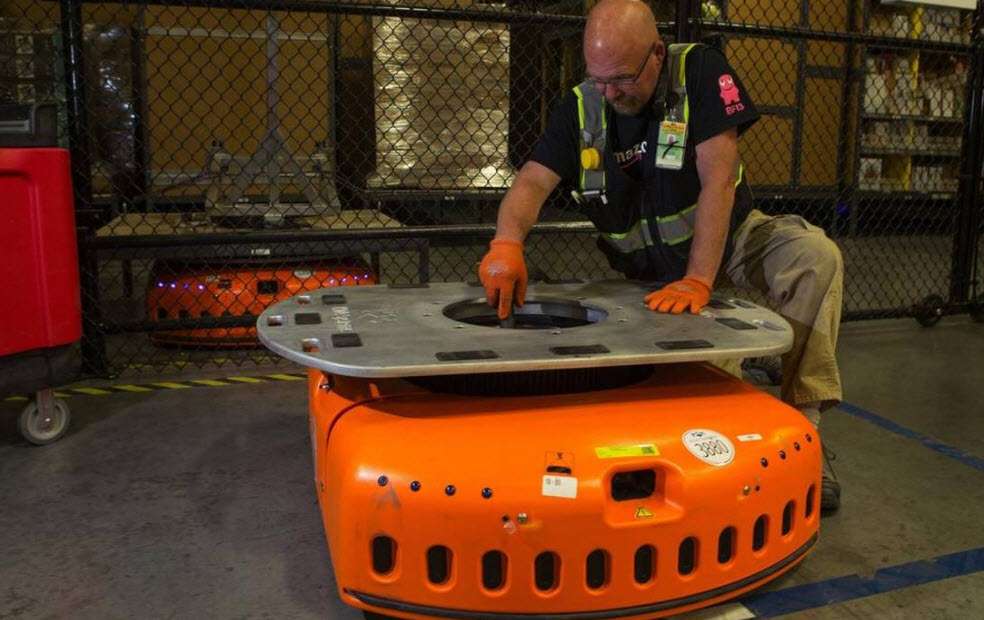| When it comes to job creation in the United States, President Trump will be displeased to hear the latest findings from Quartz: 170,000 fewer retail jobs in 2017 – and 75,000 more Amazon robots.
In November, we explained that while everyone likes to point the finger at Amazon, America’s retail apocalypse can’t be tied to just one catalyst (see: A Look At America’s Retail Apocalypse In Charts), however, fierce competition in the industry has induced an army of robots at Amazon’s fulfillment centers, which has certainly led to the termination of retail employees across the industry. At the end of 2016, Amazon was the eighth-largest private employer in the United States with a headcount growing by 40% year-over-year. So basically, as Amazon’s robots helped to disrupt the overall retail industry, the excess of cheap retail labor is now flocking to Amazon. We must point out the majority of positions being added are jobs not careers inundated in wage stagnation. |
|
The article notes, Amazon’s growth has to come at some cost, because there is no free-lunch here..
Does Amazon create more jobs than it destroys?The analysis below from Quartz’s staff provides the shocking realization that retail job-loss in 2017 is the first annual decline since 2009. Even though Amazon is hiring at a fast clip, it won’t be enough to cover the losses in the rest of the industry. All the while, amazon added 55,000 robots this year as the trend in robot additions is now parabolic…
Change in employees and robots at Amazon and Amazon-related retail |
Employees and Robots, 2014 - 2016 |
| Amazon’s growth and efficiency (driven by AI and automation) is a key factor in stock performance verse S&P Retail Index. We must also add, the Swiss National Bank (SNB) has been a larger buyer of the stock igniting momentum to the upside. The article notes, the company is increasing robotics investment, and in their assumption— machines could represent at-least 20% of the total employee base by EOY. Employees within Amazon should be concerned about this startling trend, because even they are not safe. |
AMZN and XRT, Dec 2016 - Oct 2017 |
Quartz further said,
|
US Retail Sales, 2014 - 2016(see more posts on U.S. Retail Sales, ) |
| In the grand scheme of things, Amazon represents 20% of the entire US retail industry growth in 2017- even though it only represents 3% total retail sales. As explained in the beginning, there are many catalyst contributing to retail’s demise, but it appears Amazon is ushering in a new normal with robots overtaking retail jobs in contradiction to President Trump’s glorious statements about explosive job growth.
For the time being, retail employees who have been laid off will get another taste of reality, when they drown their sorrows at the local strip joint. |
|
| Get used to it, this is the new normal. |
Full story here Are you the author? Previous post See more for Next post
Tags: Amazon,Business,E-commerce,Labor,New Normal,newslettersent,Reality,SP,Swiss National Bank,U.S. Retail Sales










